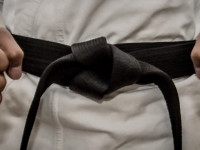Strikes can be quite diverse and are usually performed with different parts of the hand or arm. Each striking technique can impact a target from a multitude of directions and angles, making strikes a Karateka's most versatile weapon. Strikes are most useful against smaller, more specific targets and, as such, require good accuracy. Only those…
Learn more
Karate Strikes


